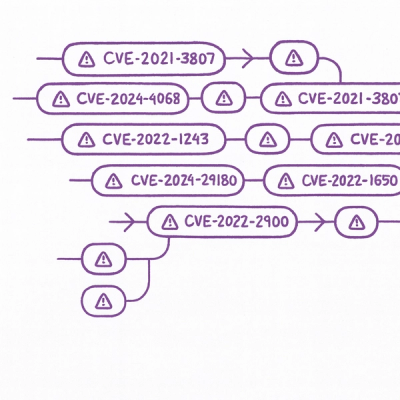
Security News
Astral Launches pyx: A Python-Native Package Registry
Astral unveils pyx, a Python-native package registry in beta, designed to speed installs, enhance security, and integrate deeply with uv.
A Ruby on Rails engine that adds drag-and-drop streaming multi-file uploader that uses strictly modern standard Web technologies.
| Author | Tim Morgan |
| Version | 1.0.1 (Nov 9, 2013) |
| License | Released under the MIT license. |
This gem adds a JavaScript library that draws a drag-and-drop target. When a file is dragged to this target, it is queued for upload. Files are uploaded to an endpoint with a configured amount of maximum parallel uploads. JavaScript callbacks are used to track file progress.
In addition to the uploader itself, a higher-level abstraction, called "EasyUploader", is also included. EasyUploader is powered by MultiUploader, but also includes a quick-'n'-ugly™ user interface. You can use EasyUploader to quickly start testing MultiUploader in your app, or you can even use it in production if you really hate rolling your own designs. It also makes for excellent example code for learning MultiUploader!
For people to use this gem, they will need support for XmlHttpRequest level 2 and the JavaScript drag-and-drop API. If you use the theme that ships with this gem, your clients will also need CSS level 3. All of these are supported on recent versions of Safari and Google Chrome.
To use this gem, add to your Gemfile:
gem 'multiuploader'
To your application.js file (or some other JavaScript manifest file), add:
//= require multiuploader
You may also need to add the following if it is not already there:
//= require jquery
If you wish to additionally use EasyUploader, you must add the following to
your application.css file (or some other CSS manifest file);
/*
*= require easyuploader
*/
To your application.js file (or some other JavaScript manifest file), add:
//= require easyuploader
We'll get started with EasyUploader first, since that's the ... easiest. If you want to skip the baby stuff and get right into hot hot adult uploading, flip to the next subsection.
All you need to do to start using EasyUploader is create a DIV element and call
the easyUploader jQuery method on it:
$('#easyuploader').easyUploader("http://some/endpoint", 'file');
The first parameter is the URL to upload the files to, and the second is the
name of the form field to associate the file data with. The encoding will always
be application/x-www-form-urlencoded.
If you use the easyuploader ID, the styles in the easyuploader.css.scss.erb
file will kick in and you should get an instant drag-and-drop target. Drag one
or more files in there and you should start seeing the magic happen on your
server.
There is a third parameter, not used above, that allows you to pass in additional options to the underlying MultiUploader:
$('#easyuploader').easyUploader("http://some/endpoint", 'file', {
maxSimultaneousUploads: 4
});
Read the MultiUploader documentation for a full list of options.
For more low-level control of the upload process, you'll need to use MultiUploader directly. The signature is the same as EasyUploader:
$('#easyuploader').multiUploader("http://some/endpoint", 'file');
The only difference is, this time you need to implement the callbacks yourself.
There are four: startHandler, progressHandler, loadHandler, and
errorHandler. Their method signatures are as follows:
$('#easyuploader').multiUploader("http://some/endpoint", 'file', {
startHandler: function(file_unique_id, file) {
// called when a file begins uploading
},
progressHandler: function(file_unique_id, state, position, total) {
// called periodically as a file is uploaded
// (position/total)*100 gives the percent complete
},
loadHandler: function(file_unique_id, xhr) {
// called when the upload is complete and the response has been received
// use the xhr (an XmlHttpRequest instance) to get response data
},
errorHandler: function(file_unique_id, xhr) {
// called when the upload fails or an error response is received
// same arguments as loadHandler
}
});
Notice that each callback receives a unique ID for the file. These are randomly generated and have no meaningful information. They're just used to keep track of your files. You should associate each upload's unique ID with the page element that displays its progress.
Also note that the startHandler will not necessarily be called the moment the
user releases his mouse button. If the maxSimultaneousUploads option is set,
additional uploads beyond this number will be queued and put into a pending
state until an "upload slot" is vacated.
The progressHandler method receives a state parameter. The value will be
"upload" when the file is uploading, and "download" when the upload has
completed and the client is downloading the server's response.
For more information, and a list of additional options, see the MultiUploader class documentation.
FAQs
Unknown package
We found that multiuploader demonstrated a not healthy version release cadence and project activity because the last version was released a year ago. It has 1 open source maintainer collaborating on the project.
Did you know?

Socket for GitHub automatically highlights issues in each pull request and monitors the health of all your open source dependencies. Discover the contents of your packages and block harmful activity before you install or update your dependencies.

Security News
Astral unveils pyx, a Python-native package registry in beta, designed to speed installs, enhance security, and integrate deeply with uv.

Security News
The Latio podcast explores how static and runtime reachability help teams prioritize exploitable vulnerabilities and streamline AppSec workflows.

Security News
The latest Opengrep releases add Apex scanning, precision rule tuning, and performance gains for open source static code analysis.